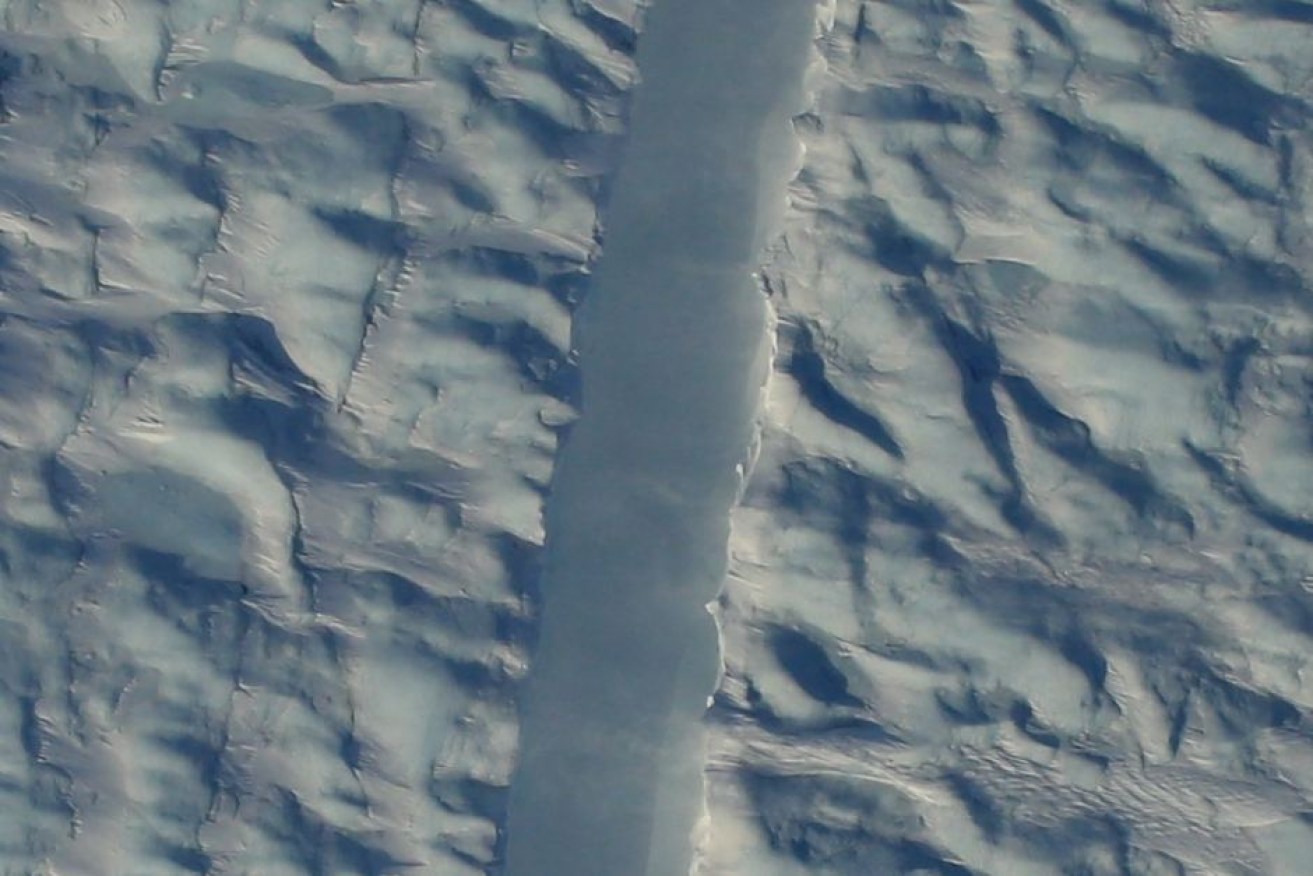Cracks in Greenland glacier could lead to massive calving event

NASA's Operate IceBridge released images of the new rift. Photo: NASA/DMS/Gary Hoffmann
A series of images released by NASA show a huge crack in Greenland’s Petermann Glacier, sparking questions about where it came from and what it will mean for the future of the glacier.
NASA’s Operation IceBridge, as part of an airborne survey of changing polar ice, flew over the chasm and captured more detailed images. The team posted the images to Facebook on Friday.
The rift was first spotted by Stef Lhermitte, an associate professor at Delft University of Technology in the Netherlands who studies satellite remote sensing.
Mr Lhermitte posted satellite images on Twitter alerting a Petermann Glacier expedition team of the crack and questioning whether it was a prelude of a new island, or simply ocean forcing creating the rift.
Is this recent internal crack in #Petermann glacier the prelude of a new @Petermann_ice island? 1/5 pic.twitter.com/V8qKF1MwmC
— Stef Lhermitte (@StefLhermitte) April 12, 2017
The chasm opens near the centre of the glacier’s floating ice shelf – the tongue of ice extending into the water from the glacier on land.
It appears relatively close to another, older, curved rift that has spread from the flank of the shelf.
If the two cracks meet, part of the ice shelf could break off, calving an iceberg.
In the Facebook post, NASA flagged a medial flowline near the new rift “whose presence may exert a stagnating effect on the propagation of the new rift toward the older one”.
From today's #IceBridge flight: Portion of the newly identified rift on Petermann Glacier's ice shelf (straight feature near bottom center) pic.twitter.com/kmeQoik8ZO
— NASA Ice (@NASA_ICE) April 14, 2017
Covering about 1295 square kilometres along the north-western coast of Greenland, Petermann Glacier’s floating ice tongue is the Northern Hemisphere’s largest, and it has occasionally calved large icebergs.
Between 2000 and 2001, the glacier lost nearly 87 square kilometres and in July 2008 alone, the glacier lost another 29 square kilometres.
In 2008, NASA reported concerns at the presence of a rift which, if extended completely across the glacier, could see it losing another 160 square kilometres – one third of its current length.

Petermann Glacier’s east wall near the terminus of the floating ice shelf. Photo: NASA/John Sonntag








